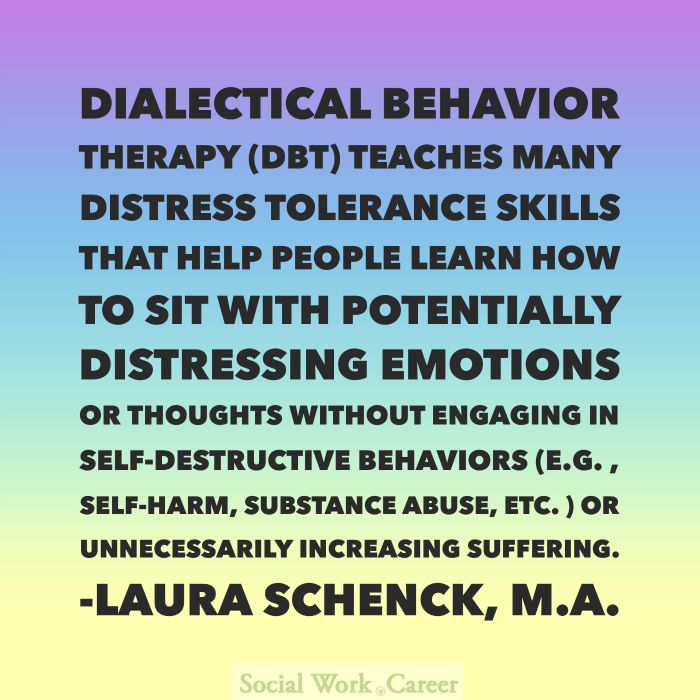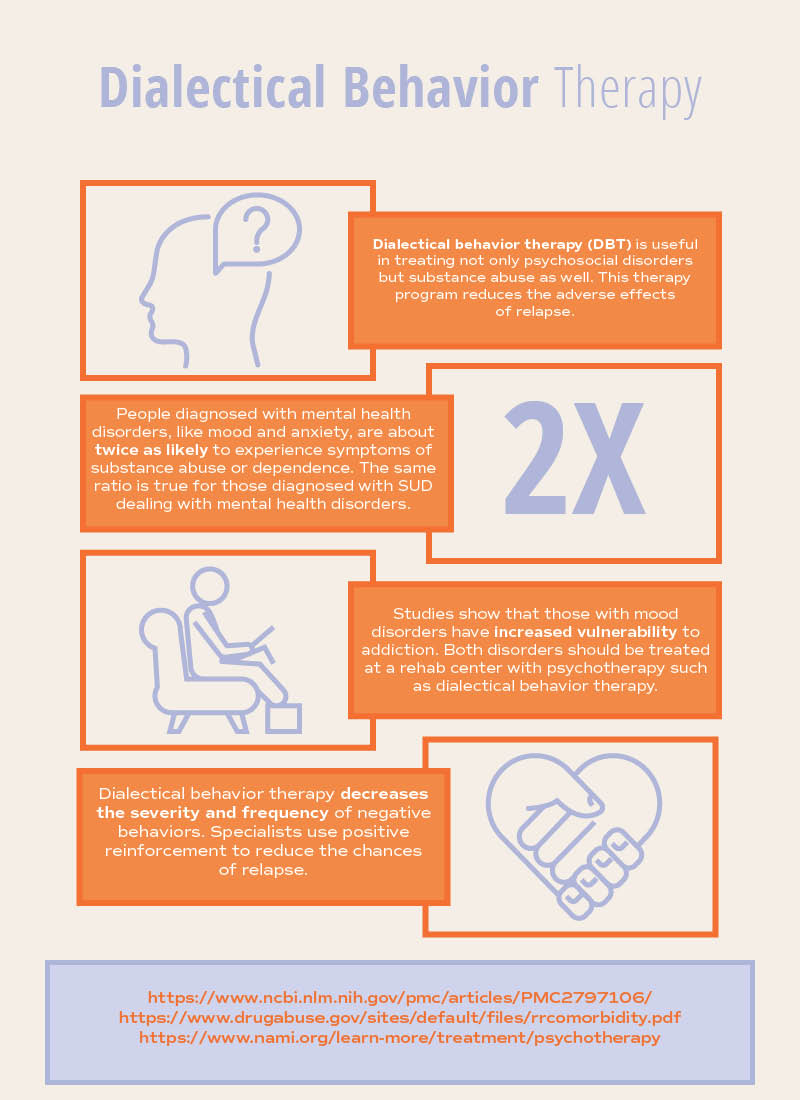

It helps people in treatment reach out to their therapist for support when a challenging situation comes up between sessions. Phone coaching is also an important part of DBT. These assignments allow people to practice learned skills in day-to-day life. The groups are designed to help those in treatment develop behavioral skills through group work and homework assignments. Those in standard DBT attend therapy and a skills training group weekly. The standard form of DBT consists of individual therapy, skills training group, phone coaching, and a therapist consultation team. For example, if someone participates in multiple treatment programs within one agency, the therapist might make sure each program was set up to reinforce all the positive skills and behaviors learned.

For example, therapists might use self-monitoring tracking sheets so sessions can be adapted to address the most severe issues first. Motivational enhancement. DBT uses individualized behavioral treatment plans to reduce problematic behaviors that might negatively affect quality of life.The person may use emotion regulation skills before and after the discussion. For example, a therapist might ask the person in treatment to talk with a partner about a conflict. People in therapy may learn to apply what they have learned at home, at school, at work, and in the community. Generalization. DBT therapists use various techniques to encourage the transfer of learned skills across all settings.These are emotion regulation, mindfulness, interpersonal effectiveness, and distress tolerance. In treatment, four basic skill sets are taught. Capability enhancement. DBT provides opportunities for the development of existing skills.It incorporates the following five components: DBT was originally designed to treat people who had chronic suicidal thoughts as a symptom of borderline personality.ĭBT can be used in a variety of mental health settings. Issues DBT treats include self-harm, eating and food issues, addiction, and posttraumatic stress, as well as borderline personality. Many of the people they work with have conditions described as "difficult to treat." They work to develop techniques for achieving goals, improving well-being, and effecting lasting positive change.Ĭurrently, DBT is used to treat people with chronic or severe mental health issues. The term dialectical refers to the processes that bring opposite concepts together such as change and acceptance.Ĭertified practitioners of DBT offer acceptance and support to people in therapy. It operates within a framework of dialectical methods. This treatment focuses on problem solving and acceptance-based strategies. It aims to treat people who see little or no improvement with other therapy models.
DIALECTIC BEHAVIOR THERAPY HOW TO

Rules and Ethics of Online Therapy for Therapists.
DIALECTIC BEHAVIOR THERAPY SOFTWARE
Practice Management Software for Therapists.


 0 kommentar(er)
0 kommentar(er)
